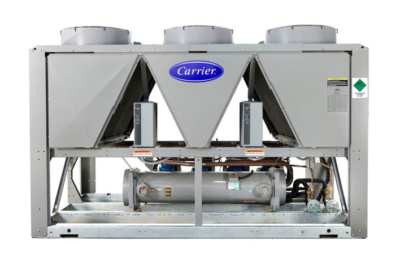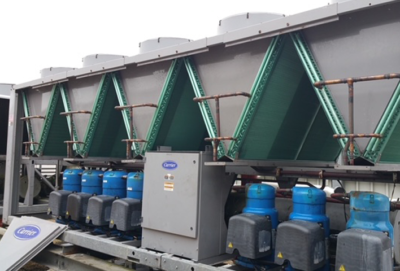Converting the Microchannel Coil in the Carrier® AquaSnap® Chiller: Improve performance and reliability
Upgrading Your Carrier AquaSnap Chiller: Enhance Performance and Reliability with a Microchannel Conversion
Tired of dealing with the reliability issues of your Carrier AquaSnap chiller? Learn how a microchannel coil conversion can save you time, money, and headaches in the long run.
When it comes to replacing commercial condenser coils, the Carrier AquaSnap chiller is often at the top of the list. But did you know that many of these units originally come with all-aluminum microchannel coils? While this design was introduced as a cost-effective solution, it’s not without its challenges.
Microchannel coils have been widely used in HVAC systems for over a decade, including in Carrier’s AquaSnap models and other OEM equipment. They’re lighter, cheaper, and reduce refrigerant use. However, these benefits come with some serious drawbacks that can affect performance and longevity.

A Carrier AquaSnap chiller equipped with all-aluminum microchannel coils.
The Drawbacks of Microchannel Coils
One of the biggest issues with microchannel coils is their susceptibility to dirt and debris buildup. If not maintained regularly, they can cause high head pressure and operational inefficiencies. Plus, because of their low refrigerant charge requirements, even small leaks can lead to system failure. Repairing aluminum coils is also tricky—often requiring specialized techniques like two-part epoxy or torch welding, which can be both time-consuming and risky in certain conditions.
Another common problem is the occurrence of leaks at the junctions between copper and aluminum components. These connections are more prone to corrosion and stress, leading to frequent maintenance needs and higher repair costs over time.
Why Switch to Copper Tube, Aluminum Fin Coils?
That's where a microchannel conversion comes in. By upgrading to a copper tube, aluminum fin coil, you're not just improving performance—you're investing in long-term reliability and efficiency. This type of coil is more durable, easier to repair, and less prone to leaks than its aluminum counterpart.
Some key advantages include:
- Greater durability and resistance to wear
- Easier maintenance and repairs
- Ability to pump down the system during repairs, saving time and reducing refrigerant loss
- Lower long-term maintenance costs due to fewer leaks and better performance

A Carrier AquaSnap chiller with upgraded copper tube, aluminum fin coils.
Understanding the Conversion Process
When replacing microchannel coils with copper tube coils, it's important to complete the circuit properly. For example, if your unit has four coils per circuit and one is damaged, you’ll need to replace all four. This ensures consistent refrigerant flow and prevents imbalances that could harm the system’s performance.
Copper tube coils also have different refrigerant pressure drops compared to microchannel coils. Mixing the two can lead to operational issues, so it’s essential to replace all coils in a circuit when making the switch.
Why Choose Nationwide Coils for Your Microchannel Conversion?
While the Carrier AquaSnap is one of the most common units we convert, our expertise extends to a wide range of commercial HVAC systems. With years of experience and thousands of successful conversions, we’ve earned the reputation as the #MastersOfMicrochannelConversion.
If you're looking to upgrade your system and improve its performance, don’t hesitate to reach out. Contact us at 1.888.CoilPro or email us anytime. Just provide the make and model of your unit, and we'll help you get started on the right path.
Spray Can Machinery,Aerosol Tin Can Making,Aerosol Tin Can Making Line,Aerosol Tin Bottle Making Machine
Zhoushan Golden Wing Machinery Co., Ltd. , https://www.goldenwingmachines.com